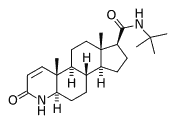In addition to its irritative symptoms, benign prostatic hypertrophy (BPH) can sometimes lead to recurrent urinary tract infections, incontinence, acute retention, or a need for prostate reduction surgery. Both alpha-adrenergic blockers and finasteride have demonstrated efficacy in reducing symptoms related to BPH. One-year trials combining an alpha blocker and finasteride did not show any benefit superior to single-drug therapy in relief of urinary symptoms. McConnell and coinvestigators report on data from a four-year trial of combination therapy for BPH.
This multicenter trial enrolled 3,047 men over age 50 with an American Urology Association (AUA) score of 8 to 30, indicating mild to moderate obstructive urinary symptoms. More than 17 percent of trial participants were from minority groups. Exclusion criteria for the trial included previous medical or surgical treatment for BPH, blood pressure below 90/70 mm Hg, or a prostate specific antigen (PSA) level higher than 10 ng per mL.
Men were randomly assigned to daily dosing with either finasteride (5 mg), doxazosin (titrated up to 4 to 8 mg, as tolerated), combination therapy with both drugs, or placebo. The men were followed for a mean duration of 4.5 years. The primary outcome measured was clinical progression of BPH, which was defined as an increased AUA score of 4 points or more or a morbid outcome related to BPH, such as urinary retention, incontinence, or urosepsis.
Clinical progression of BPH during the study occurred in 1.5 percent of men taking combination therapy, compared with 4.5 percent of participants taking placebo. Monotherapy with doxazosin was associated with clinical progression in 2.7 percent of subjects, while finasteride alone was associated with progression in 2.9 percent. The need for prostate reduction surgery arose in 0.4 percent of men taking combination therapy, 0.5 percent of those taking finasteride alone, 1.3 percent taking doxazosin monotherapy, and 1.3 percent of men taking placebo.
Small increases in side effects were noted with drug therapy compared with placebo, and the effects were additive with combination therapy. The most common side effects that were significantly higher with doxazosin treatment were dizziness and decreased appetite, while finasteride use was associated with erectile dysfunction and decreased libido.
The authors conclude that combination therapy with doxazosin and finasteride reduces clinical progression of BPH over a four-year time period more than either medication alone.
McConnell JD, et al. The long-term effect of doxazosin, finasteride, and combination therapy on the clinical progression of benign prostatic hyperplasia. N Engl J Med December 18, 2003;349:2387-98.
EDITOR'S NOTE: While combination therapy did reduce clinical progression in a statistically significant number of study participants, it is interesting to note that 95.5 percent of men had no progression over a 4.5-year span while taking placebo, and that 98.7 percent did not need prostate reduction surgery. An accompanying editorial by Vaughan (1) also notes that the unexpected finding of a small increased incidence of high-grade prostate cancers in patients taking finasteride, as reported in the recently published Prostate Cancer Prevention Trial, also may give some pause to physicians and patients considering combination therapy for control of BPH.--B.Z.
Reference
(1.) Vaughan ED Jr. Medical management of benign prostatic hyperplasia--are two drugs better than one? [Editorial] N Engl J Med December 18, 2003;349:2449-51.
COPYRIGHT 2004 American Academy of Family Physicians
COPYRIGHT 2004 Gale Group



